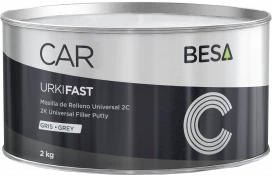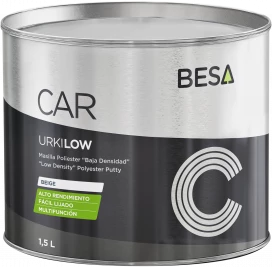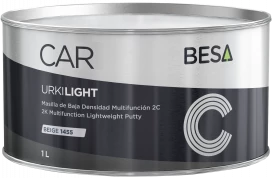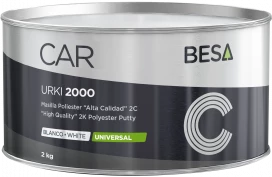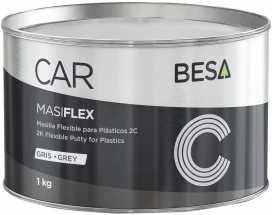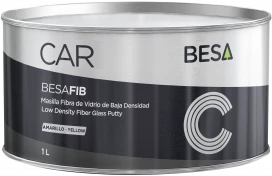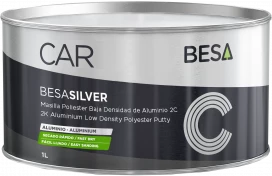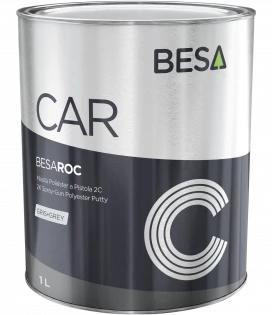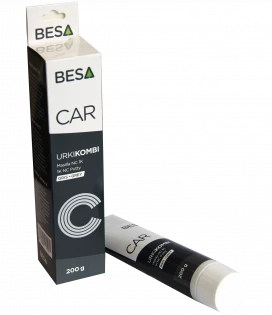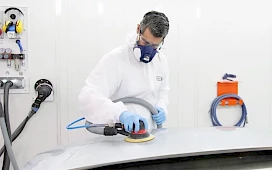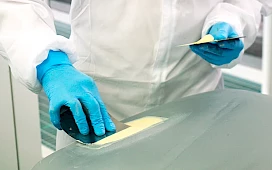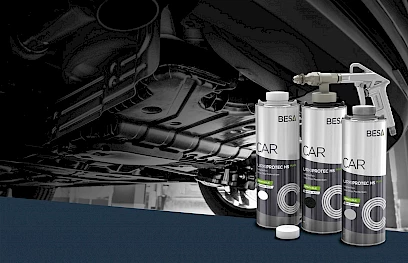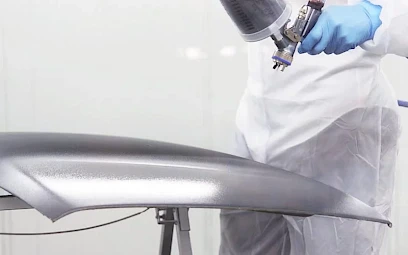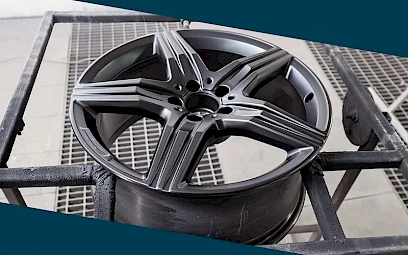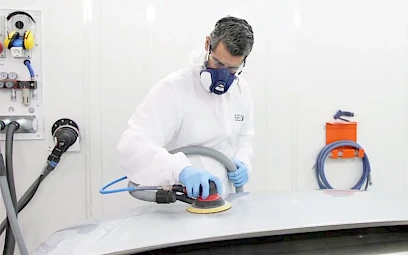Although most body putties are very versatile and can be used on different supports, some types are specifically designed to be applied on a particular material, such as plastic putties.
The right selection and application of the puttyis a critical aspect of quality work, as it enables the professional to increase profitability in time and the consumed material on each repair.
Characteristics of bodywork putty
Currently, the most commonly used type of car putty in paint workshops and bodyshops polyester one, which is a type that is composed of polyester resins.
The polyester putty is a product that is made up of 2 components (also said 2K), since it needs a specific benzoyl peroxide hardener (in a ratio of 2 or 3% of the weight, according to the technical data sheet) to be activated. When the putty is mixed with the hardener, it produces an exothermic chemical reaction (which generates heat) which causes the putty to dry and harden.
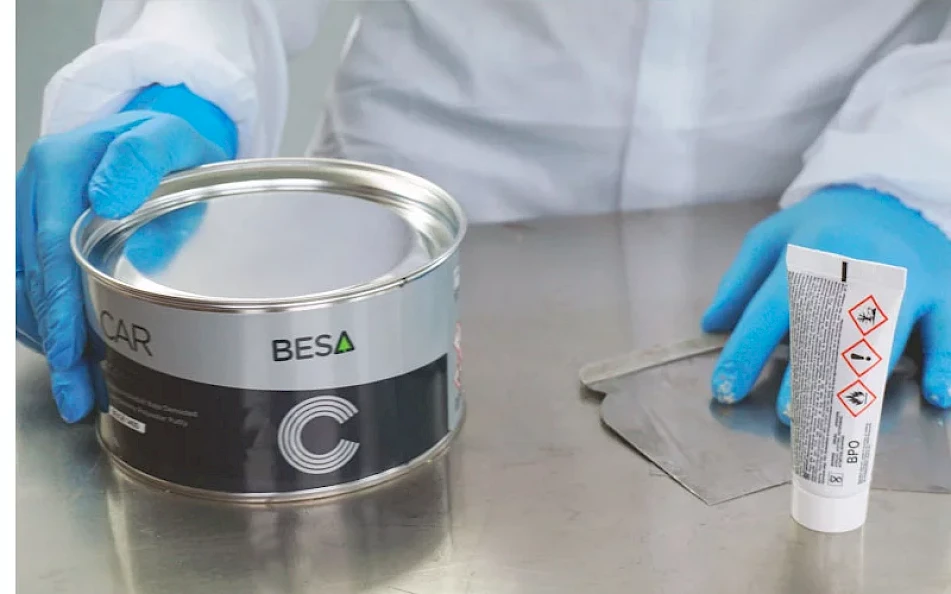
The use of bodywork putty allows you to even out a metal or plastic surface, filling and levelling the area to be repaired. It plays an essential role as support and adherence element for base paints and its correct application will also influence the final outcome of the finishing. An essential characteristic of a quality putty is good sanding and levelling behaviour.
It should be noted that fillers do not generally provide metal corrosion protection, so if your intention is to provide protection to bare sheet metal, you should first apply an anti-corrosion primer.
In addition, the polyester putty cannot function as primer for final finish paints because after sanding, you must apply a priming coat which will act as an insulating and anchoring coat.
These are the main characteristics a good bodywork putty must provide:
Low porosity and high elasticity
A quality putty should not generate many pores when applied, minimising irregularities on the surface.
In addition, especially on flexible supports such as plastics, the putty must provide elasticity to absorb possible impacts and vibrations, thus preventing cracking.
Easy application and sanding of the filler
The body filler must be easy to apply and to spread, resulting in a regular and homogeneous surface. In addition, it should make the sanding process easier, without having to apply excessive pressure or doing several sanding stages. This will result in less repair time.
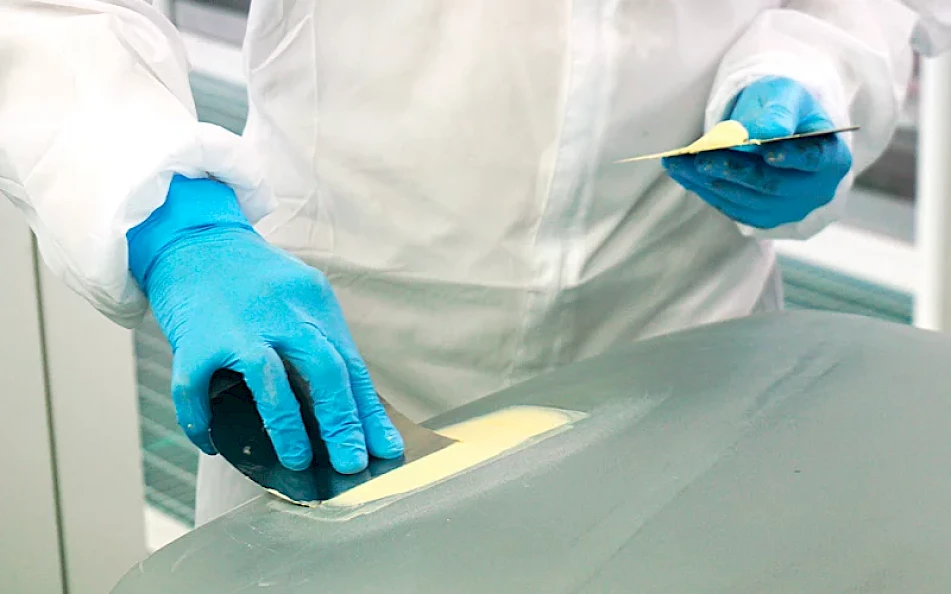
Good resistance to compressive and tensile stress
Sometimes, if the micronage of the applied coat is excessive, when compressive or tensile stress is exercised, the putty coat and the topcoats of paint may tend to crack or peel. The concept of “level of weariness” of the filler, i.e. the number of times it can withstand the same mechanical stress without deteriorating, is also important.
Correct Adherence
The polyester putty must have good adherence to the support. It is essential to use the appropriate putty for each surface, since each type has its own characteristics to optimise anchorage and adherence to the different materials.
Relacionado: Cómo Lijar la Masilla de Forma Rentable
Types of car putties
In the past, bodywork putties had thicker and coarser finishes, forcing the professional to slow down the putty application and sanding process.
Over time, vehicle manufacturers have evolved bodywork designs, resulting in more complex geometric shapes and design lines, using new easy to shape and lighter weight materials such as plastic or aluminium.
The appearance of these new materials in bodywork has also forced manufacturers to develop new types of specially adapted putties, without detracting any loss of adherence, hardness, drying and sanding.
Today, the wide variety of types of putties has allowed to improve productivity and profitability in repairs, offering also a better finish.
This technological evolution and the appearance of different types and compositions of putties also forces the bodywork professional to know each one of the variants that can better adapt better to each type of repair:
Universal polyester putty
It’s the most common type of putty used in bodyshops. It has great hardness and resistance, and it also provides good adherence to steel plate, galvanising and electrozinc coating. It also stands out for its versatile use, both in car refinishing and in industrial vehicles. A recommended product from this category of putties would be URKI-FAST. We could also highlight the URKI-2000 in this section. It is easy to sand, apply, thin and flexible.
Lightweight or low-density putties
These are low-density putties, with hollow charges, which makes them lighter. It is a type of easy-to-sand and apply polyester putty, which is versatile and has a good level of adherence on different supports such as galvanised aluminium, plastics, steel, etc. Examples of this type of putty: URKI-LIGHT or URKI-LOW.
Putty for plastics
These are recommended for levelling deformations in plastic parts. It is a type of putty that has a high level of shock absorption, and high elasticity and flexibility. It can provide good adherence to the different types of plastics in a car, such as bumpers or exterior mouldings. They tend to have a softer and less porous texture. A putty in this category would be MASI-FLEX.
Aluminium putties
This filler contains aluminium metal pigments. This metallic component allows to increase the filling performance and hardness in comparison to other fillers. Aluminium particle-content fillers offer great adherence on different types of surfaces such as steel, aluminium or zinc coated substrates. A recommended product would be BESA-SILVER.
Fibreglass reinforced putty
It is a type of very compact polyester putty in which it has been added fibreglass, providing it with great hardness and filling power, in addition to making it very adherent to different supports and materials. Examples of fibreglass reinforced putties: URKI-FIB and BESA-FIB.
High filling power polyester putty
These are mainly used when you need to apply a thick coat of filler, mainly in major repairs where the part could not be levelled correctly by manual handling of the sheet metal.
They are used for small repairs where small holes have been made in the bodywork. You can find different load sizes to better suit each repair. For example: URKI-FAST.
Spray putty
These are used for large surface filling. Their application is non-porous and uniform.
These fillers allow less thickness, and are applied with an airbrush instead of a spatula, in order to optimise filler process times: BESA-ROC.
Putty for touch-ups
Single-component polyester filler based on acrylic resin and drying only by air evaporation. They are used to cover small pores or scratches; they have low mechanical resistance and must be applied in thin coats. Its filling capacity is more limited. A recommended product would be URKI-KOMBI.
Tips for handling polyester putties
As we always point out, it is advisable to take extreme precautions when working with chemical products such as polyester putties:
- Use of appropriate PPE: During handling, you should wear gloves, a sweatshirt, goggles and a suitable respiratory protector.
- Cleaning of equipment and tools: In order to prevent deterioration of the tools and equipment you use daily; you should pay special attention to their cleanliness. Application tools should not have any traces of the putty or hardener used in previous repairs, in order to make a smooth and regular application on the surface. It is also advisable to carry out the mixing in a clean place designed for this purpose, to avoid contact with other products that may cause a possible chemical reaction.
- Controlled environmental conditions: You must ensure proper ventilation to prevent inhaling toxic fumes and avoiding exposing the putty to extreme temperatures.







